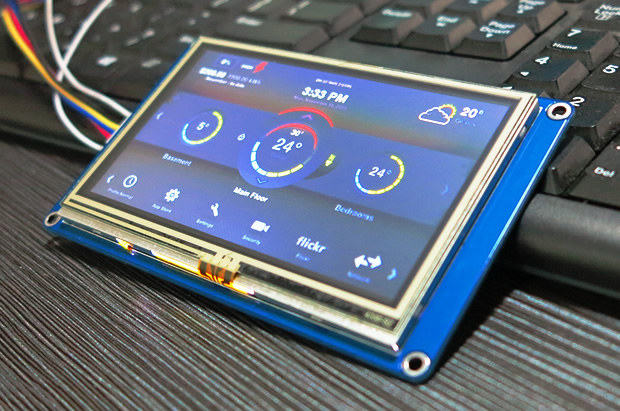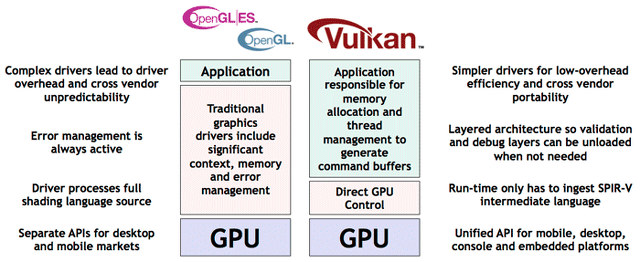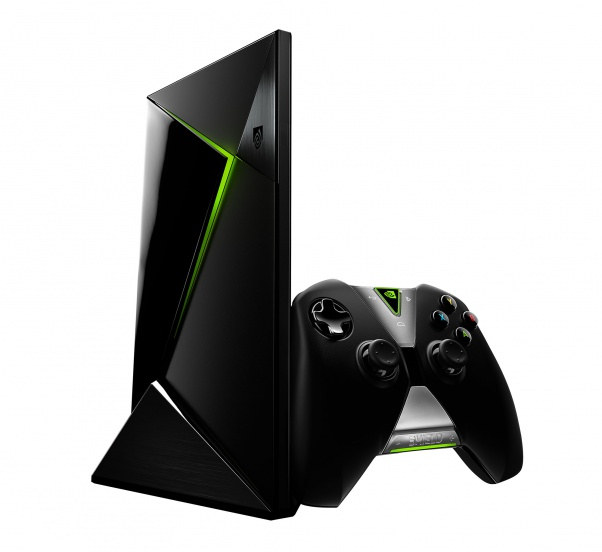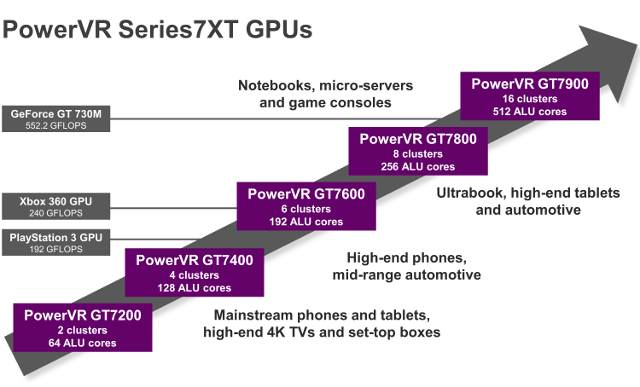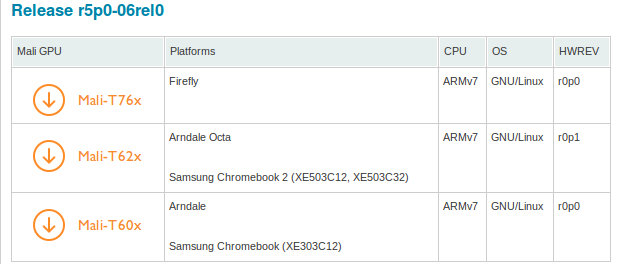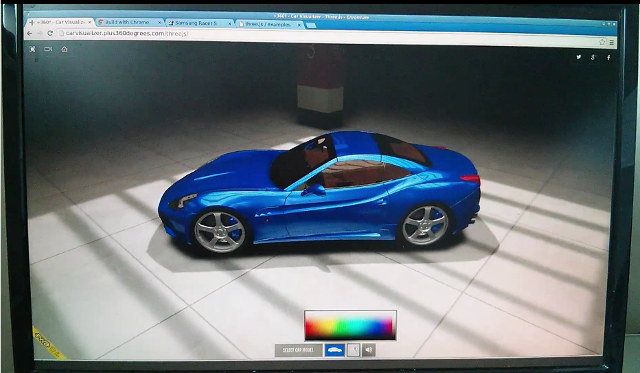When I write about a new processor with a PowerVR GPU, I can be sure there will be one or two comments saying something like “It has a PowerVR GPU, it’s a non-starter”, mostly because of the status of graphics drivers in Linux. Luc Verhaegen (libv) also made a presentation at FOSDEM 2013 listing various open source projects for GPUs found in ARM processors and PowerVR was the only one without any community project. Bear in mind that apart from Nvidia, and to some extend Broadcom for the VideoCore IV GPU found in BCM2835 / BCM2836 processors used in Raspberry Pi boards, no other companies have released user space drivers for their GPUs, and all work is done by volunteers for other open source GPU drivers, and I’m not sure any of them work 100% yet. Imagination has already provided working GPU drivers for their MIPS Creator-CI20 board, these are […]
Nextion 2.4″ and 4.3″ UART TFT Displays Come with a Drag and Drop UI Editor (Crowdfunding)
You may want or need to add a small TFT display to control your devices, and it may not always be easy to interface with the hardware, and desiging the user interface may be time consuming. ITEAD Studio latest project, Nextion TFT HMI touchscreen displays, aims to simplify connection with a simple UART interface, and make UI design easier with their Nextion Editor that allows developers to create a user interface without coding. Two models are available: Nextion-2.4″ 2.4″ display with 320×240 resolution Refresh rate: 80 ms 4MB flash 4-pin UART interface Micro-SD card slot, GPU, resistive touch sensor. Dimensions – Board: 74.43 x 42.85 x 3.32 mm; display: 60.78 x 42.62 mm Power Consumption – Sleep: 20 mA; active: 90 mA Nextion-4.3″ 4.3″ display with 480×272 resolution Refresh rate: 20 ms 16MB flash 6-pin UART interface Micro SD card slot, GPU, RGB driver, RGB buffer, resistive touch sensor Dimensions […]
Linux 4.0 Release – Main Changes, ARM and MIPS Architectures
Linus Torvalds “Ima Sheep” released Linux Kernel 4.0 on Sunday: So I decided to release 4.0 as per the normal schedule, because there really weren’t any known issues, and while I’ll be traveling during the end of the upcoming week due to a college visit, I’m hoping that won’t affect the merge window very much. We’ll see. Linux 4.0 was a pretty small release both in linux-next and in final size, although obviously “small” is all relative. It’s still over 10k non-merge commits. But we’ve definitely had bigger releases (and judging by linux-next v4.1 is going to be one of the bigger ones). Which is all good. It definitely matches the “v4.0 is supposed to be a_stable_ release”, and very much not about new experimental features etc. I’m personally so much happier with time-based releases than the bad old days when we had feature-based releases. That said, there’s a few […]
Meet Vulkan, The Successor of OpenGL and OpenGL ES 3D Graphics APIs
So far embedded systems are typically using SoCs with GPU supporting OpenGL ES, a subset of the full fledge OpenGL API used in desktop computers and workstations. These royalty-free standards are defined by Khronos Group non-profit organization, and as features in the embedded space and traditional computers merge, the group has now revealed the next-generation OpenGL specs will be called Vulkan. The new API will run on GPUs supporting OpenGL ES 3.1 or greater, take less CPU resources than its predecessors, and support multiple command buffers that can be created in parallel. More work will be required at the application level, but direct GPU control by the drivers will apparently result in less memory copies improving performance, or at least off-loading the CPU. It might be transparent to developers using game engines. GPU drivers will also be less complex. Vulkan will also use the new SPIR-V language shared with OpenCL […]
Nvidia Unveils $199 SHIELD Android TV Game Console Powered by Nvidia Tegra X1 Processor
Can it run Crisis? Yes! Nvidia has just announced SHIELD, an Android TV Game Console powered by the latest Tegra X1 SoC coupled with 3GB, 16GB flash, and which I believe to be the very first consumer ARM system with true 4K video output, decoding/encoding up to 60 fps, as well as both VP9 and H.265 codec at 4K resolution. I’m still not 100% sure gaming will be feasible at 4K resolutions. Since they already have a Shield tablet, and Shield portable game console, it would have been nice to find another name though… SHIELD specifications: SoC – NVIDIA Tegra X1 octa-core processor with 4x Cortex A57 cores, 4x Cortex A53 cores, and a 256-core Maxwell GPU System Memory – 3GB RAM Storage – 16 GB + MicroSD slot Video Output – HDMI 2.0 up to 4K @ 60 Hz Video – 4K playback and capture up to 60 fps […]
Imagination PowerVR GT7900 GPU is Made for Game Consoles and Notebooks
Imaginatino Technologies has just introduced the most powerful GPU of their new PowerVR Series7 GPU family with GT7900 featuring 16 unified shading clusters and 512 ALU cores for game consoles, micro-servers, and notebooks. PowerVR GT7900 is still an embedded GPU with support for OpenGL ES 3.1 + AEP (Android Extension Pack) compatibility, full hardware support for tessellation and ASTC LDR and HDR texture compression standards. The new GPU delivers up to 800 GFLOPS (FP32) or 1.6 TFLOPS (FP16) graphics and compute performance at 800 MHz (using 16 nm FinFET+ manufacturing process), which compares to about 550 GFLOPS (FP32) for an Nvidia GeForce GT730M at comparable frequency. This is even more powerful than the Maxwell GPU found in Tegra X1 which delivers 1+ TFLOPS (FP16), although the Nvidia processor may have a lower power envelope. Combined with PowerVR Series5 decode and encode video processors and PowerVR V2500 camera processor, GT7900 can […]
ARM Releases Kernel Drivers for Mali-T880 / T860 GPUs, User Space Drivers for Mali-T76x GPUs
ARM Mali GPU drivers includes both open source kernel drivers, and binary userspace drivers supporting framebuffer and/ior X11 implementation. The former is rarely an issue and is quickly released, but the latter requires porting and testing for a specific hardware platform, as well legal work, which greatly delay the releases. Mali-T880 GPU was announced at the beginning of the month together with ARM Cortex A72, and on February 17, 2015, ARM released an update to their Mali-T600 series, Mali-T700 series & Mali-T860/T880 GPU kernel device drivers with revision r5p1-00rel0 that adds supports to Mali-T860 and Mali-T880 GPU. These open source drivers are available for Android and Linux, and also support early Mali-T700 and T600 GPUs. Separately, the company has also released Mali-T76X GPU drivers for Firefly board powered by Rockchip RK3288 quad core Cortex A17 processor featuring a Mali-T764 GPU. The first release only supports the framebuffer driver, but ARM […]
Linux 3D GPU Acceleration Demo on Rockchip RK3288 based Firefly Board
Several devices and development boards based on Rockchip RK3288 processor already support Linux, usually with images based on Ubuntu, including Ugoos UM3 / UT3, Open Hour Chameleon, and Firefly-RK3288 among others. What these images lack however, is support for 2D and 3D graphics acceleration with the GPU, and hardware video decoding/encoding with the VPU. But Jas-hacks has made some progress with 3D graphics support. He has managed to add GPU acceleration via EGL/OpenGL ES bringing 3D acceleration to the platform, but 2D support is not there yet, meaning X11 still heavily relies on software rendering. But the implementation is still good enough to run the usual es2gears and glmark2-es2 benchmarks. as well as some WebGL demos in Chromium. Performance is currently underwhelming, with 50 points in glmark-es2, even a bit lower than the score (54 points) I got with ODROID-X board powered by Exynos 4412 SoC with a Mali-400MP4 GPU, […]



